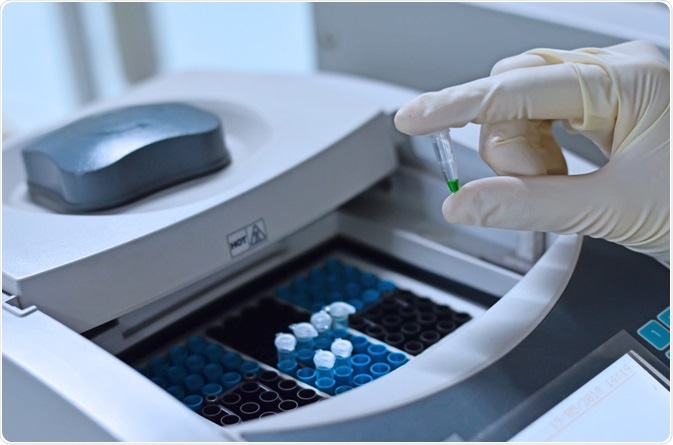The human microbiome has been estimated to contain up to 100 trillion cells encoding for 100-fold more distinctive genes than those present in the known human genome.
To determine the impact of potential alterations in the diversity, content, and functioning of the microbiome, it is crucial to begin with improving the understanding of the genomic make-up of this complex system of organisms.

Image Credit: vrx/Shutterstock.com
An overview of the microbiome
As the most heavily colonized and studied ecosystem, the gut microbiome contains a large population of bacterial species, as well as several other organisms, including viruses, archaea, fungi, and parasites.
Over the past several years, researchers have become increasingly interested in determining the mechanisms by which the content of the microbiome determines interpersonal differences in human health and disease.
Much of these correlations are due to the role that the microbiome has in normal metabolic and homeostatic processes, detoxification, and the development of the immune system.
To this end, microbiome genome-wide association studies (mGWAS) has been largely successful in identifying genetic polymorphisms of individuals and determining how they affect the functionality of the microbiome.
What are genome-wide association studies?
The primary goal of GWAS is to determine how the variabilities of an individual’s genomic composition will lead to differences in their phenotypes. Regardless of which analytical method is used in GWAS, they will require both genotypic and phenotypic measurements obtained from and compared between numerous subjects.
In addition to generating a better understanding of the microbiome, mGWAS also aim to reduce the missing heritability gap, which arises from the observation that the number of GWAS-associated variants is significantly lower than that accounted for in familial studies.
While the precise mechanism behind the heritability gap is not fully understood, many researchers believe that traditional GWAS only account for the genetic variation that exists within human cells and does not consider how the microbiome could play a role in phenotypic presentations.
Phenotypes for mGWAS
Several microbiome attributes (alpha diversity, beta diversity, and the relative abundance of bacterial taxa), have been used as phenotypes during a typical mGWAS.
Alpha diversity, for example, describes the diversity of microbial species present within a pool of samples and can be used as a representative phenotype for determining its association with a given set of genotypes.
Comparatively, beta diversity describes the diversity of phenotypes between different sample pools.
Lastly, the relative abundance of a single taxon — which can include the species, genus, family, order, class, or phylum — present at a given taxonomic level, can also be used as a phenotype for determining genotype associations.
Genomic analytical methods of the microbiome
The two main approaches used to determine the identity and abundance of microorganisms present within the microbiome include amplicon sequencing and whole-genome shotgun sequencing.
Amplicon sequencing
Within every type of bacteria exists the 16S rRNA gene, which is comprised of interspersed variable regions that are adjacent to conserved regions of the gene.
During amplicon sequencing, probes hybridize the conserved regions of the 16S rRNA gene to conduct polymerase chain reaction (PCR) amplification. Once PCR amplification of this genetic area is achieved, the variable regions of the gene can be sequenced.

Image Credit: Kallayanee Naloka/Shutterstock.com
Depending on their degree of similarity, the variable regions are then classified into operational taxonomic units (OTUs).
The advantages associated with amplicon sequencing include the ability to accurately represent the concentration of all microorganisms present within a given microbiota sample, regardless of whether they are naturally present at much lower concentrations.
Additionally, the 16S rRNA method of sequencing is associated with a highly impressive single-target sensitivity that has demonstrated its ability to represent 80% of the total bacterial RNA.
Metagenomic sequencing
Metagenomic sequencing is considered to be the primary analytical method to investigate the microbiome present within the human gastrointestinal tract, as well as is the one present in natural and artificially constructed environments.
By definition, metagenomic sequencing involves the random shearing of whole extracted DNA, followed by the parallel sequencing of all DNA fragments.
As compared to amplicon sequencing, metagenomic sequencing is capable of providing a full functional characterization of a whole pool of an entire microbial community, as well as reconstructing a full phylogenetic tree.
Some of the earliest studies (33 individuals from the United States and Japan) provided approximately 3 gigabases (Gb) of microbial sequences from fecal samples, whereas a second study, utilizing the Illumina Genome Analyzer (GA), conducted deep sequencing on total DNA from the fecal samples of 124 European individuals, generating over 576 Gb of microbial sequences.
Future directions of microbiome genomics
The datasets obtained from research initiatives like the Integrative Human Microbiome Project (iHMP), the Culturable Genome Reference (CGR) and other mGWAS, have tremendous potential for enhancing public health and improving patient care.
For example, researchers postulate that improving the understanding of the genome of the microbiome will change how epidemiologic investigations assess transmission events, assist in the elucidation of novel immune-escape variants and drug-resistance networks, and even provide new information on biological pathways that could assist in the discovery of novel therapeutics.
Further Reading
Last Updated: Apr 23, 2020